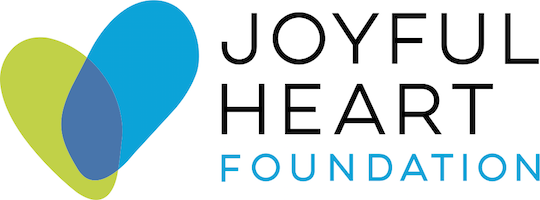You can leave this site quickly.
Learn more about Internet safety.
1in6 Thursday: Decriminalizing Trauma
Some new alternatives to “Fight, Flight or Freeze”
I’ve often said, “if you want to help men who have experienced childhood sexual abuse to heal (or for that matter to heal from physical or emotional abuse, which often accompanies sexual abuse), visit a prison, a homeless shelter or programs for substance abuse treatment or for men who’ve engaged in intimate partner violence.
Both women and men can be triggered by current events to re-experience the well-known “fight, flight, or freeze” responses left over from childhood trauma. Years of trauma research has shown us that establishing safety and emotional connection are important components in healing from childhood abuse.
Unfortunately, we men are conditioned from birth to respond to threats with a pretty limited range of options – rage, isolation or numbing. What I’ve seen so frequently among the men I’ve worked with is that their recurring fight, flight, or freeze impulses are more likely to get them before a judge in a courtroom or a doctor in an emergency room than to an appointment with a therapist.
So I was deeply moved recently when watching three remarkable film clips about innovative and compassionate alternatives to the criminalization of behaviors that men so often adopt as survival mechanisms, to stave off the effects of childhood trauma—rageful outbursts, triggered by PTSD or other forms of mental illness; the isolation and disconnection of homelessness; and numbness induced by substance abuse.
“Why Are We Using Prisons to Treat the Mentally Ill”,describes a program instituted by the San Antonio, (TX) Police Department, to provide a 48-hour crisis intervention training for all law enforcement personnel. Most initially complained about not being interested in what they called “hug a thug” training. Over time, as they learned to interpret unusual or threatening behavior as a sign of distress , the officers learned the benefit of a more empathic response.
In six years, 18,000 men and women, who previously would have been arrested or returned to the streets, were brought to a “restoration center” for a mental-health assessment.
As one clinician explained, “they’re not truly suicidal. They don’t really want to hurt somebody. They just need help.”
“Nowhere to Go But Jail” portrays the success of another program started in Salt Lake City, Utah, which promotes recovery rather than punishment for chronically homeless men and women. Many of them, used to cycle in and out of homeless shelters, and jails, depending on their level of sobriety.
The “Housing First” program, now being adopted by communities across the country, offers these chronically homeless people the security of a safe home and services as a foundation for change, rather than as a reward for success.
“If you don’t have a stable place to live, that’s going to be the biggest crisis on your mind every day,’’ explained Michelle Flynn, associate executive director of The Road Home program, which provides services using the new model. “When you have your own home, that level of stress is taken away and now you can focus on everything else….”
One formerly homeless man who was assisted by the program said, “Most people who are homeless, they’re running away from problems.” He described having been sexually abused at the age of 6 and starting drinking when he was about 13. Like many men who have had unwanted or abusive sexual experiences in childhood, he acknowledged that “I couldn’t deal with my problems.”
“I’ve been homeless for the last 20 years,” he said. Housing First has given him a safe place to start addressing that past trauma.
The program has decreased the homeless population in Utah by 72 percent in the last 9 years.
“The War on People”, describes the success of the Law Enforcement Assisted Diversion (LEAD) program in Seattle. Under the LEAD program guidelines, instead of bringing drug offenders to jail, police officers are able to take them directly to a treatment program. There, they can choose to access individualized services, including substance abuse treatment, housing and job training.
“The approach that we’ve had over the last 35 years or so… just arresting and putting people in prison for having serious addictions….we all know intellectually, that’s not the answer.’’ explained King County (WA) Prosecutor, Dan Satterberg . “What we really wanted is another option for the officer on the street. “
The program works to meet clients’ immediate needs and then focus on substance abuse treatment.
“LEAD provides relief to the neighborhoods, but also provides relief and hope to people with long-term addiction,“ Satterberg said.
Obviously, each of these programs serves women as well as men. What I found so inspiring in each film clip, was hearing the emotional voices of men who had found safety and connection, enabling them to discover alternative options to fight, flight or freeze.
 - By Peter Pollard
- By Peter Pollard
Peter Pollard is the Professional Relations & Communications Director for 1in6, Inc. Peter previously worked for 15 years as a state, child-protection social worker and was the Public Education director at Stop It Now! Since 2003, he has served as the Western Massachusetts coordinator for SNAP (Survivors Network of those Abused by Priests) and also does work for a Certified Batterers Intervention Program. See Peter’s portrait in The Bristlecone Project exhibit.
The mission of 1in6 is to help men who have had unwanted or abusive sexual experiences in childhood live healthier, happier lives.
1in6's mission also includes serving family members, friends and partners by providing information and support resources on the web and in the community.
Joyful Heart and 1in6 invite you to visit 1in6.org for info, options and hope, and to learn more about our partnership and Engaging Men initiative here.
The views expressed above are not necessarily those of the Joyful Heart Foundation or 1in6.




Your Voices